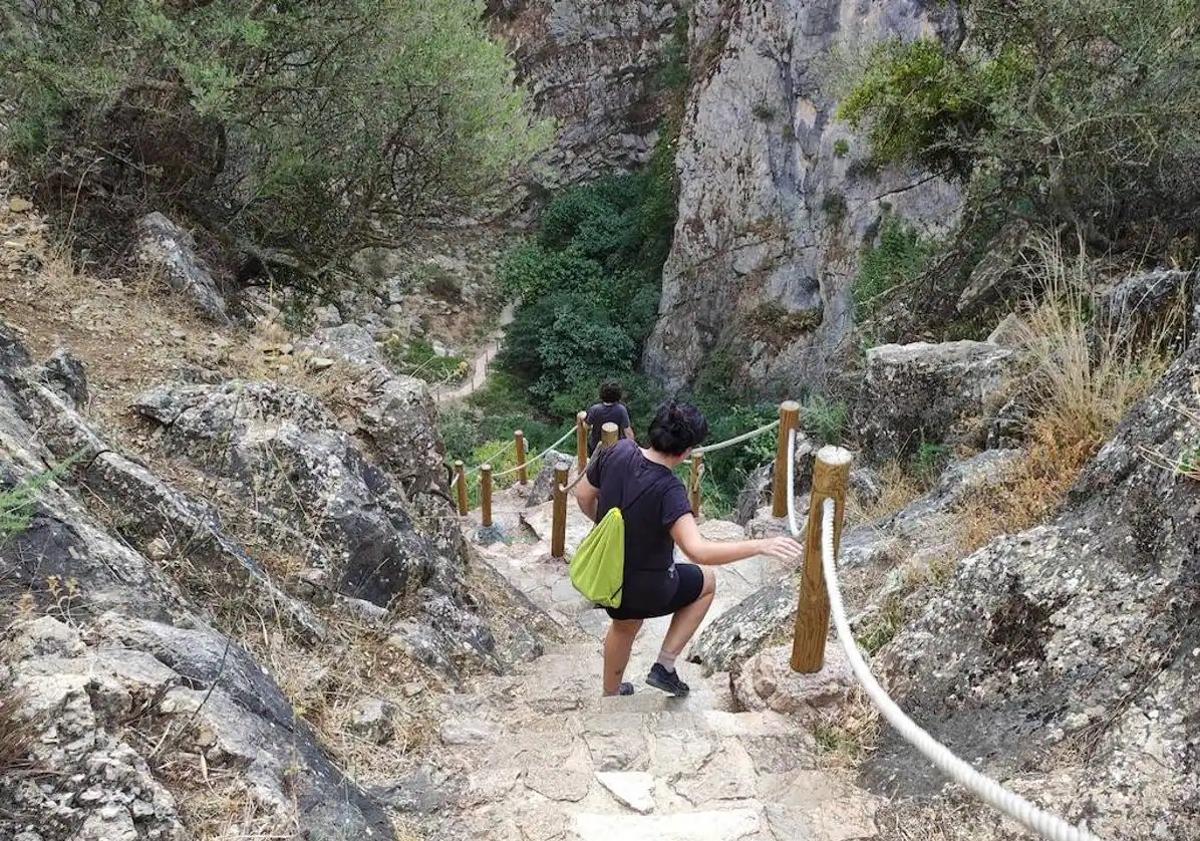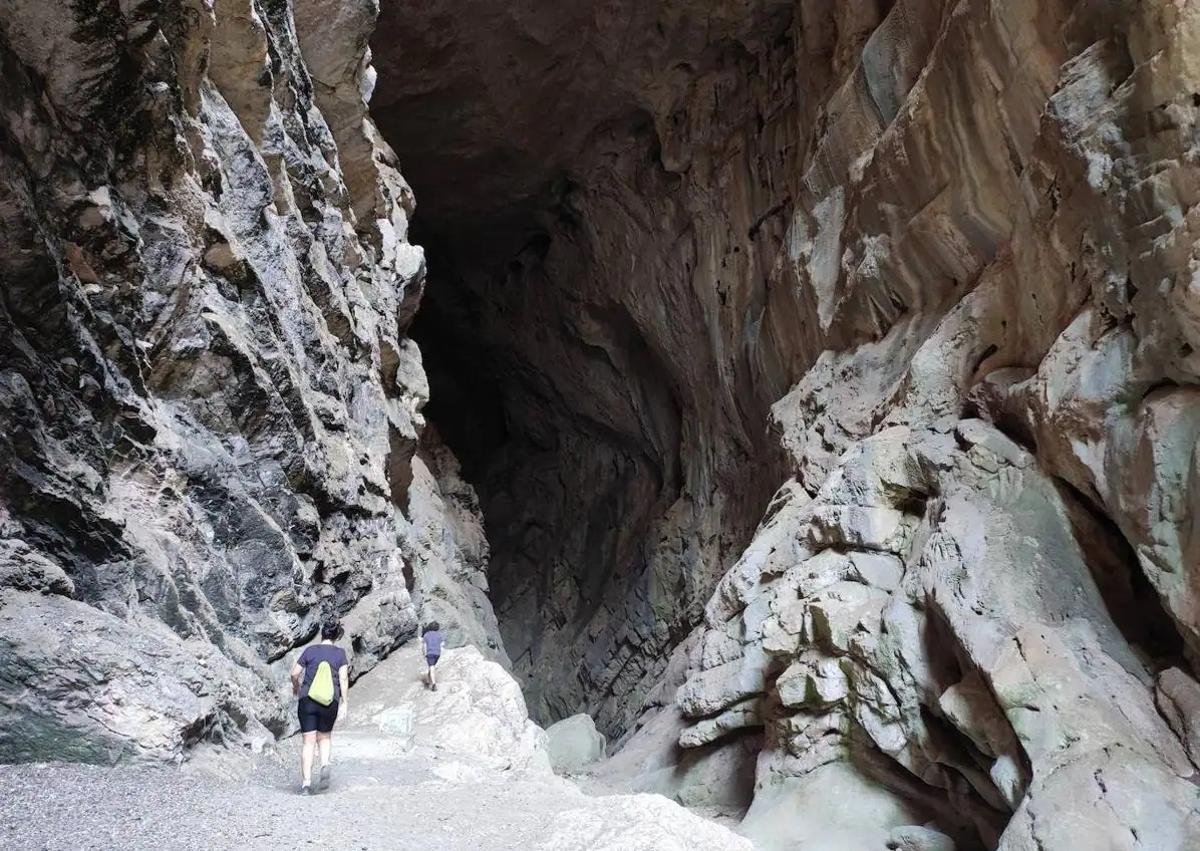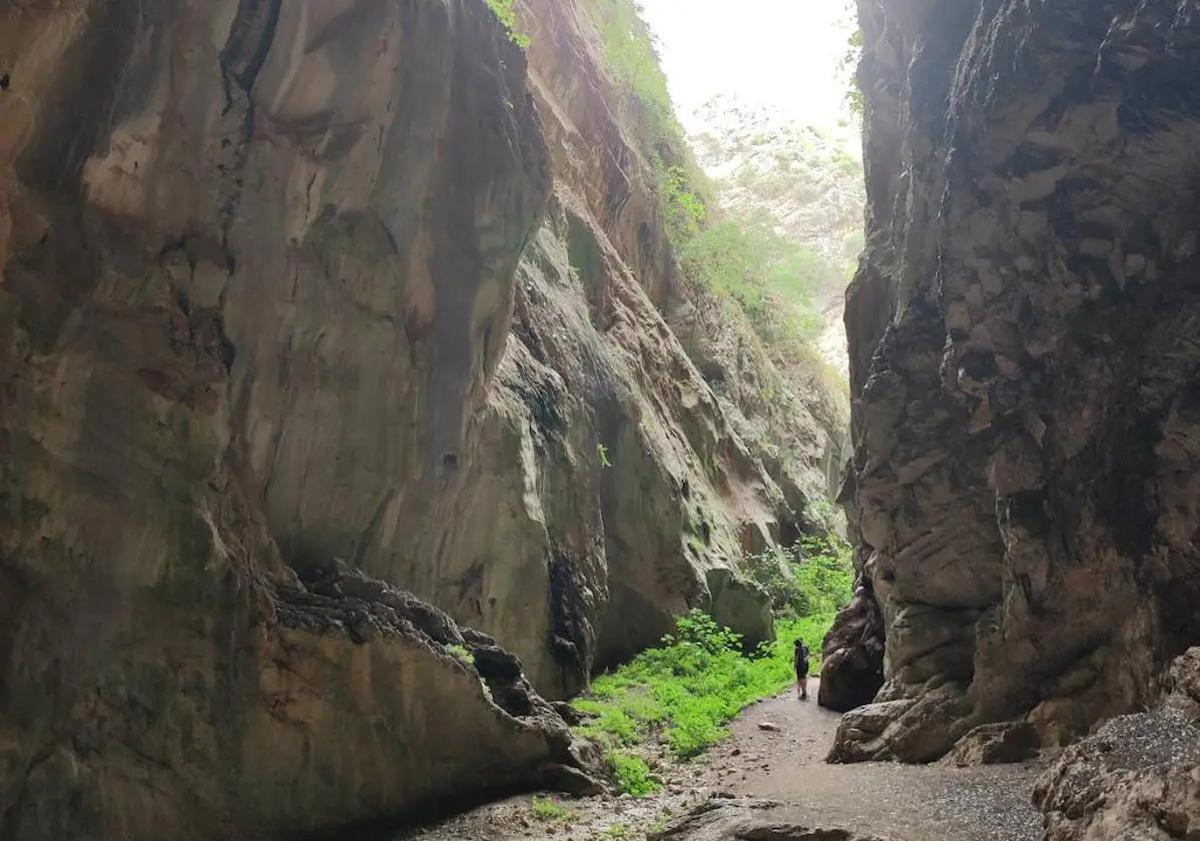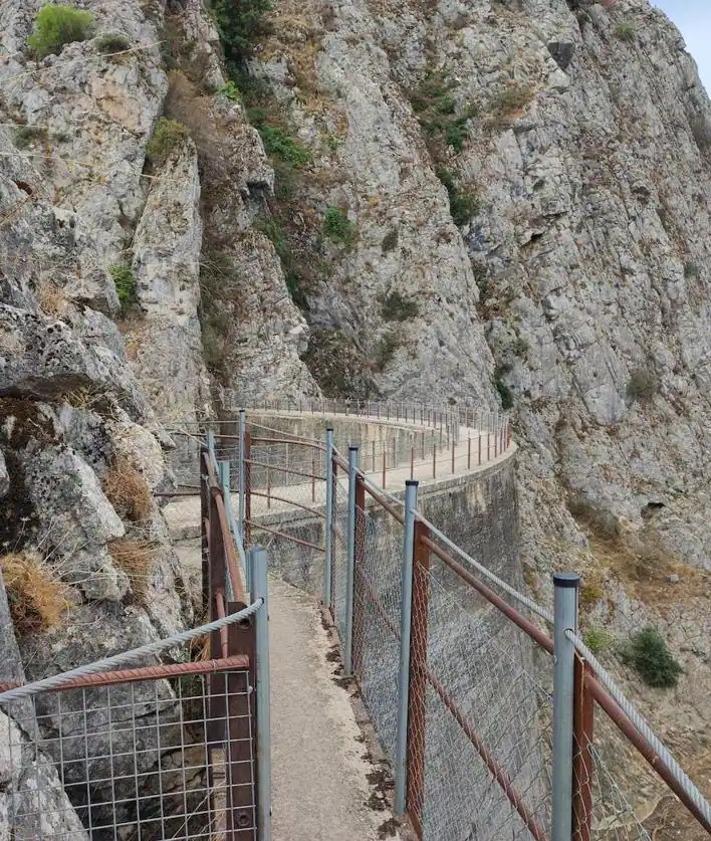

Sections
Highlight

It is part of one of the most important underground geological systems in Andalucía. Its entrance is impressive for its height (more than 50 metres) and important cave paintings from the Copper Age have been found inside. Cueva Hundidero ('sink-hole cave') has protected status as a natural monument of Andalucía and also as an asset of cultural interest. In short, it has the whole package and should be regarded as one of the treasures of inland Malaga.
Located in the municipality of Montejaque in the Serranía de Ronda, geology, biology and history come together in this cave system that is a bit tough to reach for many visitors. This is largely due to having to descend more than 500 steps to reach the entrance.
When seen from above, set in a limestone gorge, it looks spectacular. The spectacle continues as you step a few metres inside the mouth of the cave, right up to the sign that forbids you going any further inside. This privilege is only available to those who do it through licensed caving associations, such as the Sociedad Excursionista de Málaga. These are the only cavers who can apply for permits from the Junta de Andalucá regional government and are technically and professionally prepared for such a full-blown underground adventure.
It should be noted that Hundidero is part of the cave system through which the underground river Gaduares (also known as Campobuche) flows, resurfacing at the mouth of the Cueva del Gato ('ca cave') in the neighbouring municipality of Benaoján, just before it joins the river Guadiaro. Over thousands of years this river has carved its route between the two caves, leaving behind numerous galleries, sumps and underground lakes that very few people can boast of having seen with their own eyes.



However, at the cave entrance to Hundidero, those visitors who have made the steep descent to it will not see a river, only some dampness, which is to be expected in this karstic ground. The explanation lies with the manmade work that has close links with this natural wonder and is its neighbour. This is Los Caballeros ('The Knights') dam, built just over a century ago, which boasted of being the first in Spain to replace stone with modern concrete made of cement and high-quality aggregate.
Unfortunately, following its completion in 1924 it failed as a reservoir in the most spectacular way: the collected water disappeared in a matter of hours. After such significant financial investment, those driving the project (Sevillana Electricity Company) did not give up easily and tried to solve the problem, which turned out to be the ground on which they were trying to collect water. They discovered, much to their dismay, that the dammed water was draining through karst clefts into Hundidero cave, swallowing up every last drop. They persisted and tried, in vain, for more than five years to remedy the problem by entering the cave in an attempt to seal the natural points of leakage.
Still, thanks to their efforts underground, the connection between both caves, Hundidero in Montejaque and Cueva del Gato in Benaoján, was discovered. The waters collected in Caballeros reservoir leaked underground into the Gaduares river and on to the Guadiaro.



Between 1929 and the beginning of the Spanish Civil War, an attempt was made to seal off what is known today as the Hundidero-Gato geological system, but again that was in vain. Nature prevailed, despite the fact that some underground galleries were sealed off, destroying the core of this karstic landscape.
Thanks to an ambitious project initiated by Montejaque town hall in recent years, both the cave and the dam wall are being recognised as key tourist attractions and so more features are being added to this encounter with nature. The experience will not be suitable for those suffering from vertigo, but it is highly recommended for those who want a good dose of adrenaline with an activity running between the dam and the cave mouth. The first phase was completed two years ago but, in a few days (still no official opening date), a head-spinning walkway will be opened to the public. From there the visitor will gain a better understanding of the importance of this inseparable link between Caballeros dam and Hundidero cave.
While we await the official inauguration, the cave mouth can be accessed by following a path of mostly steep steps, especially steep on the final stretch. To help visitors on the way up and down (and for added safety), the path is lined with a heavy rope handrail supported by wooden posts.
By taking care and not rushing, you can walk down in just ten minutes to reach the cave entrance, quite a surprise when you see the size of its mouth. Returning from the cave, you will need to take your time to climb back up all those 500-plus steps the same way you came down.
To reach this natural monument by road, take the MA-8403 from Montejaque. The road is as winding and narrow as it is spectacular, and after just three kilometres you will reach the visitor car park. Signposts show the route to the cave and, very soon, the walkway will also be open for you to enjoy.
Publicidad
Publicidad
Publicidad
Publicidad
Esta funcionalidad es exclusiva para registrados.
Reporta un error en esta noticia

Debido a un error no hemos podido dar de alta tu suscripción.
Por favor, ponte en contacto con Atención al Cliente.

¡Bienvenido a SURINENGLISH!

Tu suscripción con Google se ha realizado correctamente, pero ya tenías otra suscripción activa en SURINENGLISH.
Déjanos tus datos y nos pondremos en contacto contigo para analizar tu caso

¡Tu suscripción con Google se ha realizado correctamente!
La compra se ha asociado al siguiente email
Comentar es una ventaja exclusiva para registrados
¿Ya eres registrado?
Inicia sesiónNecesitas ser suscriptor para poder votar.